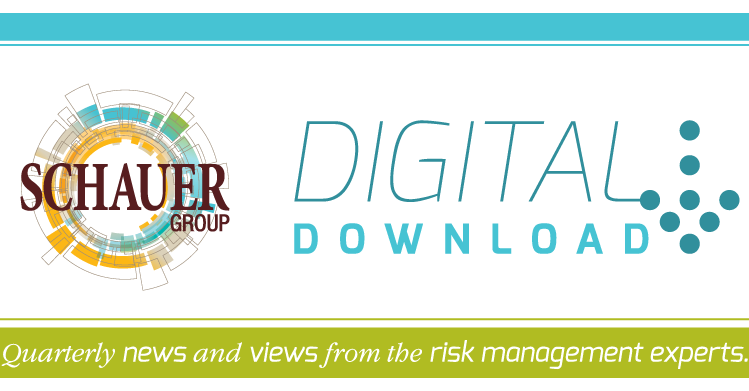At Schauer Group, we believe that directors and officers liability (D&O) insurance is a fundamental component of any company’s risk management program. A lack of D&O insurance may dissuade talented individuals from seeking an executive position at your company, as they don’t want to put their personal assets at risk in the event of a lawsuit.
As a savvy business owner looking to protect your bottom line, how do you weigh the cost of insurance to protect your senior leadership with the potential risk of a lawsuit? As regulatory investigations and defense expenses increase, prices for D&O insurance have gone up as well. Corporate indemnification provides the first line of liability protection; but certain circumstances—most notably, if the company goes bankrupt—necessitates that additional protection is offered to directors and officers.
A variety of factors determine the price of a company’s D&O insurance. Some low-risk companies pay pennies on the dollar; others pay a lot more, but they understand it’s a lot less than the expenses they’d incur in a lawsuit. Recognizing the cost drivers of D&O insurance—a company’s exposures, legislation and trends in D&O lawsuits—can help you decide what coverage your company needs to mitigate its unique exposures.
Company Characteristics and Exposures
Public, private and nonprofit corporations with assets of all sizes purchase D&O liability insurance. To determine the cost of premiums and the limits of coverage, insurers review several facets of the company’s structure and price D&O insurance accordingly. Some of these attributes include the following:
- Is the company mature or young and developing? Companies with less experience and a shorter history of proven effective management can be a riskier policy to underwrite than well-developed companies that have experienced directors and officers.
- What industry is the company involved in? Operating in certain industries, such as investment banking and securities, may expose their executive management to more risks than those for the board members of a small nonprofit.
- Is the company financially stable? Insurers consider the amount of debt a company has. Corporate indemnification usually protects directors’ and officers’ personal assets. However, if the company’s finances are unstable, they have an increased chance of becoming insolvent during a lawsuit.
- Is the company planning on going public soon? Initial public offerings, the most common way to go public, increases the exposures for a private company. Issues, such as a lack of disclosure or if the company’s performance fails to meet expectations, are significant risks for directors and officers during this process.
- Does your company have employees? From nonprofits to large, publicly held companies, employment-related claims are the primary cause of lawsuits against an organization’s directors and officers.
- Does the company operate in foreign markets? Conducting business internationally can complicate the D&O insurance needed. For example, in addition to domestic laws, European countries have their own set of regulations to follow.
- What is the company’s history of past litigation? Insurers will analyze a company’s history of previous lawsuits and any adverse business developments and executive management changes.
Current and New Legislation
Securities Exchange Commission (SEC) regulations continue to impact the cost of D&O insurance. Publicly held companies especially must be cognizant and keep current on SEC disclosure obligations and provisions in the Sarbanes-Oxley (SOX) Act of 2002, which was enacted in response to the corporate scandals of Enron, Tyco, WorldCom and others.
Also, recent changes to the Dodd-Frank Wall Street Reform and Consumer Protection Act have caused a spike in whistleblower reporting, bringing to light many D&O claims and increasing the need for D&O insurance. The new whistleblower provision in the Act now gives whistleblowers a “bounty,” or monetary compensation, if the lawsuit results in more than $1 million in monetary sanctions. Given this new incentive, there has already been an increase in the number of whistleblowers that have emerged since the Act added the provisions in early 2011.
Trends in D&O Lawsuits
Even after a thorough assessment of a company’s risks, D&O insurance continues to be a high-severity product, as carriers are often hit unexpectedly with catastrophic claims. It’s no surprise that as litigation increases, the price of D&O insurance increases as well. In addition, as the litigation process grows lengthier and if multiple lawsuits erupt from a single transaction, a company can quickly exhaust its primary layer of D&O coverage.
Some types of lawsuits occur less often, but result in catastrophic losses. Other types result in smaller payouts, but occur more frequently. Nonetheless, defense expenses can cost millions of dollars, even if the director or officer is not found liable. Some of the types of lawsuits that affect directors and officers include the following:
- Breach of fiduciary duty lawsuits
- Employee Retirement Income Security Act (ERISA) lawsuits
- Employment-related lawsuits
- Mergers and acquisitions (M&A) and “merger objection” lawsuits
- Securities class-action lawsuits
- Shareholder derivative suits
Within the last few years, there has been an increase in M&A lawsuits. In 2014, there were more than 600 lawsuits regarding M&A. Some M&A cases involve multiple lawsuits and a lengthy litigation process, which can deeply cut into a company’s primary D&O policy.
Know What Your Policy Covers
While many companies usually focus on the cost of their D&O policy, understanding the scope of the policy is even more critical. Most D&O policies are renewed yearly, and the terms and conditions can change. Read through your policy carefully. Be aware of the following:
- Look at the limits of your liability. Are they enough to cover your exposures? Companies with a lot of risk exposures usually find that they need more than just the primary coverage, and purchase excess insurance as well.
- Be aware of exclusions; most D&O policies do not cover claims that arise from fraudulent or criminal acts.
- For some insurance carriers, Employment Practices Liability (EPL) insurance and Fiduciary Liability insurance are policies that are purchased separately from primary D&O insurance. Don’t assume they are automatically included in your D&O policy.
For more information on D&O coverage options for your company, contact Schauer Group today.






